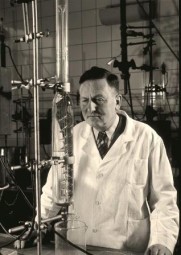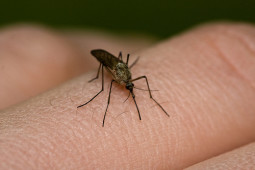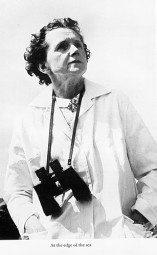DDT has a nasty reputation. Probably the most commonly-known fact about DDT is that it caused prey bird populations to plummet in the 1960s and 70s. Birds that ingested DDT produced eggs that were thin-shelled and broke before they could hatch. But I bet there are a few things you don’t know about DDT.
-

Dr. Paul Muller 1899 – 1965
Photo credit Novartis AG Foter CC BY-NC -NDDichlorodiphenyltrichloroethane was first synthesized in 1874, but it wasn’t until 1939 that Dr. Paul Muller discovered that it was extremely effective in killing insects. The Swiss chemist spent 4 years – and struggled through 349 failures – before discovering the perfect synthetic insecticide: DDT. In 1948, Muller was awarded the Nobel Prize in Medicine, though he was neither a doctor nor a medical researcher.

By the late 1950s, over half a pound of DDT per person had been sprayed in the U.S.
2. DDT has saved millions of lives worldwide. It was first used during World War II, when soldiers were ‘dusted’ with the chemical to kill mosquitoes and prevent the spread of disease. In 1947, 4.6 million American homes were sprayed with DDT, completely eradicating malaria.
3. Biomagnification is the accumulation of a substance in increasing levels in animals higher on the food chain. Some chemicals do not break down in the body and are not excreted. DDT is stored in fat cells and continues to build over time. Ospreys are at the top of their food chain and showed the greatest effects of DDT biomagnification. 

Rachel Carson was a biologist with the Bureau of Fisheries and the U.S. Fish and Wildlife Service
4. Many believe that Rachel Carson started the modern environmental movement with her campaign against DDT. She identified the impact of DDT in her book Silent Spring, published in 1962. Chemists attempted to dismiss her as ‘hysterical’. They predicted that environmental initiatives such as the ban she proposed would mean “the end of all human progress,” and a rise in “disease, epidemics, starvation, misery and suffering.” (William J. Darby in American Chemical Society, 1962) Instead, environmental initiatives have pushed us toward a cleaner, healthier environment not just for wildlife, but for people too!
 5. DDT was banned in the United States in 1972 by the Environmental Protection Agency. Other countries followed suit, and prey bird populations began to bounce back. DDT remains in the environment, though, washed downstream from agricultural land. Two initially beneficial qualities of DDT were its persistence (it lasts a very long time) and insolubility (it doesn’t dissolve in water), which we now realize are significant problems.
5. DDT was banned in the United States in 1972 by the Environmental Protection Agency. Other countries followed suit, and prey bird populations began to bounce back. DDT remains in the environment, though, washed downstream from agricultural land. Two initially beneficial qualities of DDT were its persistence (it lasts a very long time) and insolubility (it doesn’t dissolve in water), which we now realize are significant problems.

Malaria remains a major health problem in Africa, where DDT can do more good than harm.
6. DDT is still in use. Malaria continues to kill more than one million people each year. In 2006, the World Health Organization declared support for the indoor use of DDT particularly in African countries. Strict guidelines govern the use of the chemical which is sprayed on walls of health facilities and homes.
The benefits of a chemical’s use must be weighed against the consequences. With the elimination of one, another potentially dangerous chemical takes its place. Today, scientists are concerned with the levels of mercury, flame retardants (polybrominated diphenyl ethers), and prescription drugs, which may impair an osprey’s ability to reproduce or migrate. If an environment is that unhealthy for an osprey, how will it impact the people who live there?
